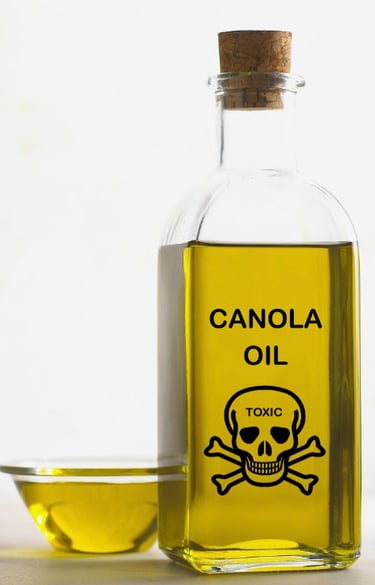Tomorrowhealthcare@runbox.com
Canola Oil Health Risks


Canola oil (also known as rapeseed oil) was first extracted in the early 1970s. In 1995, Monsanto created a genetically modified version; over 90% of the production is genetically modified.
Canola oil is hydrogenated; it is also called trans fat. Trans fats increase your risk of developing heart disease and many other health problems.
When heated, it creates chemical compounds that encourage the growth of cancer cells.
It negatively affects the cardiovascular system, elevates blood pressure, and can even trigger strokes and heart disease.
It interferes with healthy brain function by decreasing memory.
It can encourage the development of Alzheimer’s disease, the most common form of dementia.
Canola oil creates inflammation in the body.
It attacks healthy cells, blood vessels, and tissues instead of protecting them.
It feeds pathogens and is abrasive to the arteries.
It interferes with proper liver and kidney functions.
The erucic acid in canola oil harms infants due to their inability to properly break it down (even so, it is still FDA-approved).
It worsens conditions such as PCOS (polycystic ovary syndrome), endometriosis, PID (pelvic inflammatory disease), uterine fibroids, and ovarian cysts.
It also eats away at all linings in the body—from the stomach and intestinal tract linings to veins, arteries, the heart, kidneys, bladder, ureter, urethra, and, if you’re a woman, the linings of the reproductive system.
The erucic acid in canola oil is harmful to infants due to their inability to properly break it down (even so, it still is FDA approved).
It worsens conditions such as PCOS (polycystic ovary syndrome), endometriosis, PID (pelvic inflammatory disease), uterine fibroids, and ovarian cysts.
It also eats away at all linings in the body—from the stomach and intestinal tract linings to veins, arteries, the heart, kidneys, bladder, ureter, urethra, and, if you’re a woman, the linings of the reproductive system.